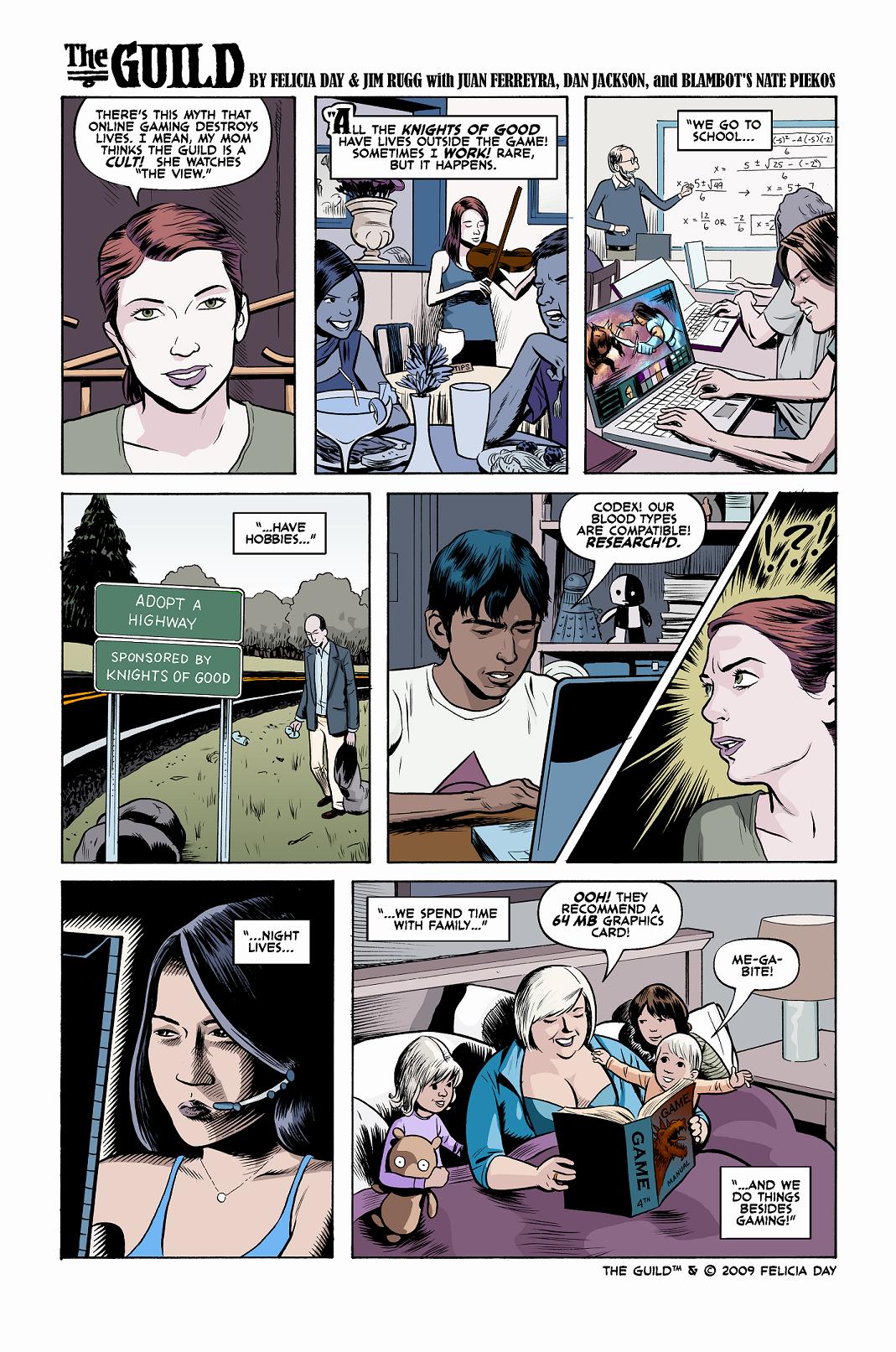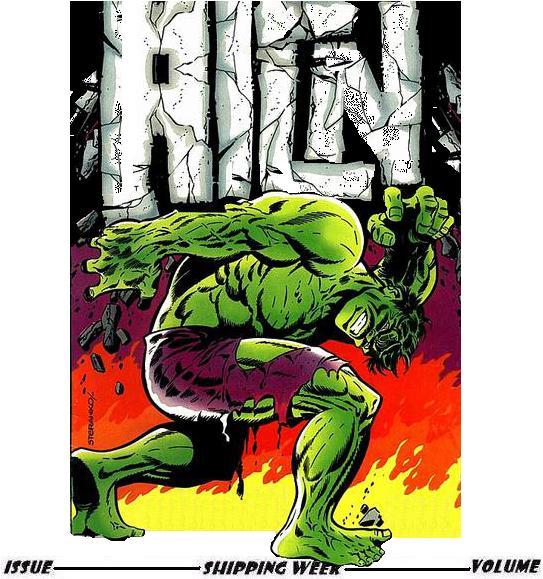
| #20 | 9/23/09 | #8 |
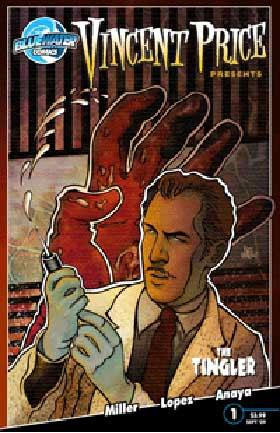
Hey, congrats, you made it another week on this great big blue marble. Ambush Bug here. A couple of things before we get into the column this week. First off, those of you looking for my VINCENT PRICE PRESENTS: THE TINGLER #1 book from Bluewater Comics (which I thought as due this Wednesday) will have to wait a week since it looks like it’ll be in stores next week instead. But enough shameless self promotion from me, on to a much cooler story.
Dark Horse has very cool comic coming out called THE GUILD which is an elaboration on Felicia Day’s online series of the same name. We’re going to be interviewing Ms. Day in a future Shoot the Messenger column, but in the meantime, Dark Horse has a pair of pages from THE GUILD that look fantastic. I can’t think of a cooler way to start this week’s column than with these cool preview pages. Click on the pages to make ‘em grow!
And now, on with the really big shoe!
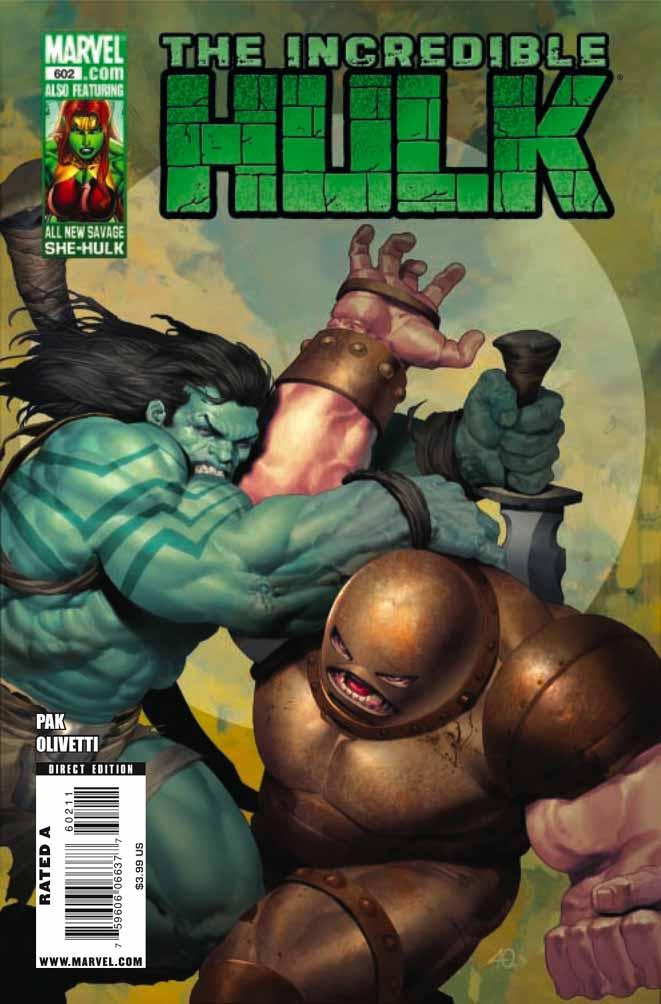
THE INCREDIBLE HULK #602
Writer: Greg Pak Art: Ariel Olietti Publisher: Marvel Comics Reviewer: Mr. Pasty One of the rewards of being a cynical snob like me is heading into an established franchise like THE INCREDIBLE HULK with every intention of defecating all over it -- only to squat down and have Greg Pak shove his fountain pen straight up my stinkhole like the vintage album cover for Metallica’s 1982 demo “Metal Up Your Ass.” It feels good, as it should, when a book that passes the 600 mark can still make reading comic books fun. It feels even better when you see a talented writer who’s recently been floundering finally right the ship and start delivering the goods. Welcome back Greg Pak, we hardly knew ye’.What I liked most about this book was how closely it resembled THE INCREDIBLE HULK tales of yesteryear, right down to its inclusion of the Juggernaut. It says something about the longevity of a series when after 600 issues it can bring back a character we’ve already seen ad nauseam and still entertain. I’ve been down on Greg Pak for his previous offerings, especially his efforts on SON OF HULK which I found to be all pizzazz and no polish, but he nails it here. Like SON OF HULK, Skaar takes center stage for most of the story but without all the teen angst and other bologna that he was saddled with in his own series. I also liked how Pak managed to make me feel nostalgic without abandoning the present timeline. A perfect example is Banner getting a text message from Jugs that reads “JGRNT: Yr ded Bnr.” Banner is trying to train Skaar for his pending showdown with Papa Hulk and to accomplish this, he creates an elaborate setup with fake locales, android townsfolk, frothy milkshakes and of course, a pissed-off Juggernaut. How pissed off? Well, apparently the Crimson Gem of Cyttorak can make you good at smashing things but bad at balancing your budget. Marko lives in a trailer park and Banner goes and blows it up real good to entice him into fighting Skaar while the Fantastic Four does some long distance musing about the fate of everyone involved.
Sound hokey? It is, but just like every other silly story from the glory days it’s a boatload of fun as well. Part of that credit goes to Ariel Olivetti for his ridiculously gorgeous art. I was never a “flat and matte” kind of guy but it works here, especially a stunning pin-up midway through the book that is void of the suddenly cliché use of jagged lines and overworked shadows. Again, it’s a throwback to a simpler time that proves less sometimes really is more. There’s also a running joke about Skaar looking like CONAN (I guess Pak read my review of SKAAR: SON OF HULK #11) that leads Greenskin Jr. to an eventual face-off with Wolverine, in a final frame that not coincidentally resembles the cover of THE INCREDIBLE HULK #340. Skaar versus another old Hulk foe with Rex Reed and Co. sticking their nose where it doesn’t belong? Count me in for issue #603, and if Pak keeps this up, a whole lot more.
Final word: Does art imitate life, or the other way around? Skaar makes HULK worth reading again now that he, like Pak, has matured and gotten comfortable in his own (green) skin.
Web heads who can’t get enough of Mr. Pasty’s word vomit are encouraged to watch him operate as Nostradumbass over at here. MMAmania.com. Love, hate and Mafia Wars requests should be directed here.

CHARLEY’S WAR Vol. 2: 1 August 1916 – 17 October 1916
Written by: Pat Mills Art by: Joe Colquhoun Published by: Titan Books Reviewed by: Baytor
The second volume of CHARLEY’S WAR picks up where the previous volume left off, with our young hero racing back to HQ to stop the friendly artillery raining down on his unit, before quickly moving on to the dreaded “Field Punisher Number One” behind the lines, executions of “cowards”, the debut of the tank, and the start of a fierce German semi-fictional counter-attack. In lesser hands, trench warfare would be as interesting as watching paint dry, but Pat Mills continues doing a good job of moving the action around to give the reader as wide a glimpse of the war as is possible.He even improves upon the first volume, which had a few too many moments where the hero gets involved in, quite frankly, unbelievable situations to maneuver him into historical moments. This volume flows much more organically, with our hero, Charley, no longer the young man eager to prove himself, and transforming into a more cautious and emotionally isolated character, all without sacrificing his basic decency. Everyone who has seen STAR WARS knows how easy it is for a young, wide-eyed, decent hero to get upstaged by the more world-weary and competent supporting cast, and Mills should be commended for adding this much needed depth to Charley.
As before, there are a few noticeable “flaws” for the modern reader, as these stories were originally published in the late 70s in 3 or 4 page bursts for an audience of pre-teen boys. There’s plenty of villainous characters lurking about to provide a proper foil for the right & proper attitudes of Charley, including the returning Lieutenant Snell (who thinks nothing of using Charley as a human shield), Sgt. Bacon (The Beast in charge of the military police), Oiley Crawleigh (Charley’s worthless brother-in-law), Doctor “No” (a doctor who refuses to take anyone off the line no matter what their ailment), and Colonel Zeiss (the brutal mastermind of the German counter-attack). Mind you, a lot of these characters are drawn upon fairly common attitudes of the time, but many of them probably would have been toned down (or excised completely) had adults been the original target audience.
Characterization is also on the minimal side, tending to stick fairly close to popular war stereotypes. Even then, Mills slips in the odd character moment that elevates some of these characters above type, such as the hard-as-nails Sergeant that is found in every single war story ever told having a private little panic attack on the eve before a major offensive. Such moments are few and far between (because at 3 or 4 pages, there’s little time for such digressions), but are a nice treat when they do happen.
But even with these “flaws”, CHARLEY’S WAR still stands as an impressive achievement in the field of war comics, as Mills & Colquhoun bring home the horror of combat. Popular characters die randomly, despicable characters fail to get their comeuppance, and there’s never any sense of accomplishment. One of the book’s best moments is showing the horror of tank combat from both sides. First demonstrating what a fearsome beast those early tanks would have been to the enemy when they first appeared, then switching roles as Charley finds himself among a tank crew, only to discover what a hard, unpleasant, and incredibly dangerous life a tanker has because he’s sitting in a unventilated, incredibly hot, slow-moving target.
While I’m not a big art fan, I still stand in awe of Joe Colquhoun’s work on this title. Comparisons to the legendary Dave Gibbons instantly spring to mind, as he has a flair for crafting realistic characters with a healthy dose of cartoony caricature. The main characters, despite a similarity of age and body shape, are instantly recognizable without Colquhoun resorting to adding easily recognized props. And I applaud his ability to put in that much detail and still have the fore-ground figures pop against the background. All of which I mentioned in my review of the first volume, but I am no less impressed the second time around.
If you’re a fan of war comics, you should be reading this. While the writing style is a bit dated and it’s hampered by the shortness of its individual installments, it still stands among the best war comics ever made.
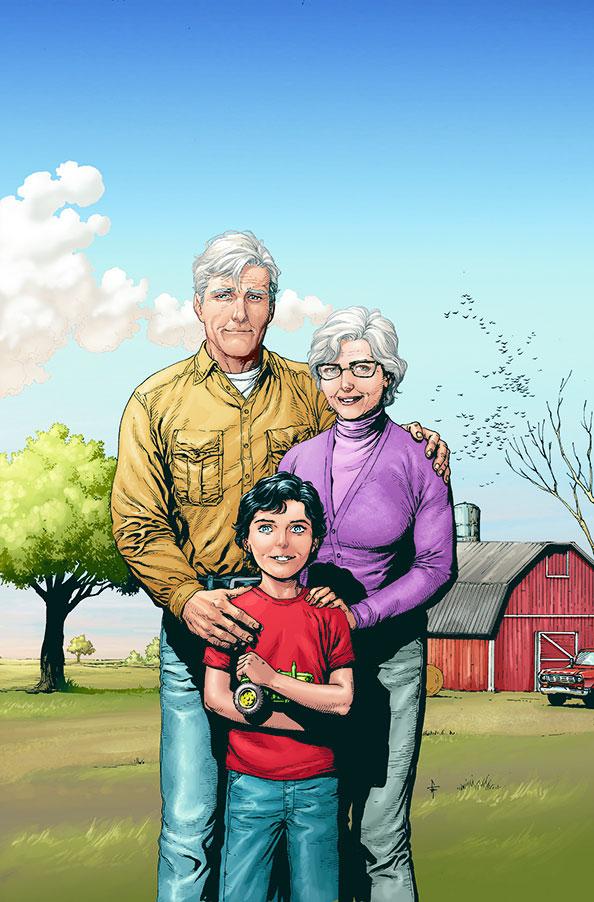
SUPERMAN: SECRET ORIGIN #1
Writer: Geoff Johns Penciller: Gary Frank Inker: Jon Sibal Colorist: Brad Anderson Publisher: DC Comics Reviewer: Matt Adler
You might be forgiven for having a bit of skepticism approaching this series; after all, doesn’t everyone already know Superman’s origin? Sent as an infant from a dying world, raised by a kindly farm couple, endowed with powers far beyond those of mortal man, disguised as Clark Kent, fights the never-ending battle for Truth, Justice, and the American Way. Etc, etc. We’ve seen variations countless times in television, movies, and yes, the comics themselves. What could this series possibly have to offer us that we haven’t already seen?Quite a bit, as it turns out. Chiefly, this is a reinvention of Superman as a Marvel character. For decades, the main difference between Marvel and DC has been in the approaches to their characters and their universe. DC’s heroes have for the most part been accepted as an integral and necessary part of their world; Marvel’s characters typically are outlaws, or at least on the fringes of society: mistrusted, hated, or feared by those they’ve sworn to protect. Superpowers themselves, in the DC Universe, have historically been treated as wonderful gifts, something anyone would be lucky to have; in the Marvel Universe, they can transform people into freaks and wreak havoc with their lives.
As the decades went on, and creators travelled back and forth between companies, the difference has slimmed; you can certainly find plenty of DC characters these days who flout those conventions. But certain elements remained; Clark Kent had an idyllic, loving childhood which developed his unshakeable faith in the goodness of humanity, Batman works hand in hand with the authorities as the accepted protector of his city, Wonder Woman is a world-renowned celebrity, etc.
The problem, of course, is that if your heroes are TOO accepted, too problem-free, they lose what makes them compelling. It’s interesting to note that the early Superman was by no means a boy scout; he was a two-fisted brawler who had no problem using force to extract confessions out of crooked politicians or to force warring countries to settle their differences. As time went on though, the needs of a corporation, combined with the social climate of the 1950s, led to a character who was substantially more clean-cut. But of late, the DC Universe has become harder-edged, and Superman has to keep up with the times (especially since his last movie was a disappointment at the box office).
Geoff Johns’ solution here is to introduce elements of what made Spider-Man and the X-Men so popular over the years: the notion that having superpowers might not necessarily be a blessing, and could actually be quite frightening, especially for a young person. For the first time, we’re seeing a Clark Kent who, as his powers emerge for the first time, realizes that he could hurt the people he cares about. And this terrifies him. This is a very different tone from the Superman origin tellings that we’re used to; most of the origin stories have glossed over his boyhood, and even the Superboy stories of yesteryear portrayed his having powers as an excuse to get into all kinds of loveable teenage antics. But let’s face it: when you’re strong enough to bend steel in your bare hands, and melt things by looking at them, you are a danger. That’s what we see Clark dealing with here.
Johns ties this very real concern skillfully in with the development of the Clark Kent “nerd persona”; if you had to worry about seriously injuring your friends any time you engaged in physical activity, you’d probably become a bookworm too. When Clark’s powers do go awry, and near disaster strikes, Johns is able to convey a palpable sense of fear, not only at the possible harm done to others, but Clark’s fear of how his friends and neighbors will react if they find out someone so dangerous is living among them. There are definite echoes of the X-Men here, where young mutants try desperately to hide their powers for fear of persecution. Indeed, Clark becomes aware of his powers well before discovering their origin; it’s implied that he simply thought he was born that way to Jonathan and Martha Kent, and thus for all intents and purposes, was a mutant.
So we see the seeds of the nerd persona planted here, and we also see Clark developing the skills at pretending/prevaricating that he will put to use throughout the rest of his career. But this isn’t the “winking Superman” of yesteryear either; there’s real anguish and heartbreak in Clark at the realization that he will never be normal, never simply be one of his peers. He will always have to keep his distance, even endure teasing and social ostracization, because he can’t reveal to anyone why he can’t be one of the gang.
Now, what if you learned that your parents weren’t really your parents? That you were an alien from another planet? That’d be pretty cool, right? Perhaps not. Already hit with the terrifying prospect of his powers running amok and hurting people, Clark is not at all prepared for what his parents decide to reveal to him. When they show him the rocket they found him in as a baby, and he makes contact with it, a hologram of his birth parents appears, and begins explaining everything to him, leading to Clark freaking out and making a run for it. It’s not all darkness and despair, though; when Clark asks his parents in regard to Krypton, “What if it’s a bad place?” Pa Kent’s response, “If it gave us you, Clark, it can’t be that bad” shows us that some of the fundamental Superman optimism remains.
The other essential portion of any Superman origin is Lex Luthor, and borrowing from the television show “Smallville” and some Silver Age comics, Johns makes him a fellow resident of Smallville (although Clark doesn’t actually meet him till this issue, which makes you wonder how small Smallville really is). Here, Luthor is shown to come from an abusive home, and uses his intellect to distance and defend himself against a world which life has led him to believe is unappreciative and undeserving of him. It’s a study in contrasts; the compassionate, engaging Clark, raised by parents of the same nature, vs. the angry, bitter Lex, who had a very different upbringing. Even at this young age, Lex has big dreams and a fascination with science (particularly extraterrestrials), but his first goal is to get the hell out of this podunk town.
Gary Frank’s art, as usual, is a pleasure to look at, and it’s interesting to compare this series to his work on Marvel’s “Supreme Power”, where he did a very different take on the Superman mythos. As in his ACTION COMICS issues, Frank’s Superman design, even young as he is here, is very Christopher Reeve influenced. And when Clark finally appears in costume at the end of the issue, Frank makes it look like exactly what it is; a skinny teenager dressed up in an outfit his mom made for him. His does a great job with Luthor as well, giving his face a kind of cruelty that ages him beyond his years.
The next issue blurb promises Superboy and The Legion of Super-Heroes, which Johns and Frank have already played with to some extent in their ACTION COMICS run. This is a very promising new beginning for the Superman mythos; it doesn’t throw the baby out with the bathwater, and yet gives us a clear demarcation to say “This is the start of a new era.” Warner Brothers could do worse than to have Geoff Johns write the next Superman movie.
In most places, Matt Adler goes by the name his mother gave him, but occasionally uses the handle "CylverSaber", based on a character he created for the old DARK FORCES II: JEDI KNIGHT game (one hint of his overweening nerddom). He currently does IT and networking support for the government of Nassau County, NY, but his dream is to write for a living, and is in the process of figuring out how to get publishers to give his stuff a look. In the meantime, he passes the time by writing for AICN, CBR, and a few other places. He has also written for MARVEL SPOTLIGHT magazine.
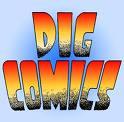
DIG COMICS
Written, Directed and Hosted by: Miguel Cima Co-Directed by: Ertuğ Tüfekçioğlu Produced by: Dirk Van Fleet & Corey Blake Reviewed by: superhero
Firstly, let’s get one thing out of the way: if you love comics you’re going to love DIG COMICS. This is a well made and lovingly crafted short film “documentary” about comic books and the love of comic books. I put the word “documentary” in quotes because while the movie is informative and well crafted it definitely has an agenda. That agenda is to get the viewer to begin reading and hopefully grow to love the art form that is comic books. Which, in my opinion, and I’m sure for many of you out there, is a very noble agenda. DIG COMICS wants to get people to “dig” comic books. It essentially asks the question: why don’t more people read comics?It’s a question that I’m sure a lot of us have asked before. Why, especially at a time where movies like “Iron Man” and “Spider-man” are raking in figures near the billion dollar mark, don’t people read comics? Why is an American cultural creation, like Jazz or Rock and Roll, losing readers as decades go by? Why can’t comics be just as popular here as they are in Japan or in some areas of Europe?
These are loaded questions for every comic fan, to be sure, and questions that have been debated on line in recent years again and again and again. DIG COMICS asks those questions and tries to address them and get to the bottom of why all other entertainment forms (movies, books, television) seem to thrive or be culturally acceptable to mainstream America while comic books (not comic movies) seem unable to make the same profits or achieve the same respect as other pop art forms. For the most part DIG COMICS succeeds in looking at what has gone on in the industry in the past several decades to get us to where we are today in comic-dom. Let’s face it, while I agree that this is probably one of the best times to be reading comic books as far as content is concerned (to see some of my views on this from several years ago click here) the industry itself is bleeding readers and has been for a while. Not only that, but it’s bleeding readers and failing to replace the older generation with a new and rabid younger generation of readers. Sure, there’s a ton of great stuff out there to read but comic book sales don’t even come close to the numbers they used to reach only decades ago. Heck, sales here don’t even come close to the numbers they’ve reached in the aforementioned Japan or some sections of Europe. Why is that?
DIG COMICS looks at these questions in a terrifically entertaining way. Writer/Director/Host Miguel Cima is a charismatic and passionate guide through the ins and outs of the comic book industry and its history. Step by step he goes through the history and the problems that have vexed comics throughout the years. He does it charmingly and with an obvious love that only someone who cares about their subject matter could do. This is not a lecture on why you should love comics. It’s a fervent plea to the viewer to just give comics a try. It’s also a loving warning to the industry to get its act together or face possible extinction. DIG COMICS is as fun and entertaining a documentary about comic-books as I have yet to see. It’s informative without being dry or stuffy and doesn’t take itself too seriously. Like many of the best comics out there it has a sense of fun to it and that’s where it succeeds best.
My only problem with it is that it seems to have a bit of a preaching to the converted feel to it. Early on in the film Cima confesses that he’s pretty much a “normal” guy. He’s got a job, a house, a real girlfriend. But during the course of the documentary he’s wearing a t-shirt with a variation of the Meltdown Comics logo on it (a fantastic comic shop here in Los Angeles). We discover that his house and garage have pretty much been taken over by comic books. When he interviews comic creator Scott Shaw! there is a Flintstones/Dino lamp in the back round. Even later, while interviewing a female comic creator, she’s wearing a tiara during the interview. I’m sorry to say, to your average viewer, these people are not going to come across as “normal”. Which is fine. Hey, I’m one of you. I’ve got comics and maquettes all over the place in my home. I’m often seen at work wearing a Captain America or Superman shirt as I wander the halls. That’s fine. I’m with you. But if what you’re trying to do is draw Mr. and Mrs. “Normal” into your crowd a more conservative approach might be what is called for. Otherwise, and I hope I’m not being insulting here, many of your subjects run the risk of being looked at in the same league as a gun nut with a wall full of guns or a sports fan wearing full body paint and a multi-colored wig at a Giants game. We are unique. We have a passion for what we love. There’s nothing wrong with that. But if you’re trying to get the unwashed masses into your groove it might be best to go at it a bit more gingerly, the Jeph Loeb interview in this documentary being the best example of that. Or possibly the “Searching for Steve Ditko” documentary produced by the BBC several years ago. I’m not saying lose your passion…I’m saying maybe tone down the “geek” a little.
Regardless, this is a great film. As a matter of fact I would put it up there with the “Searching for Steve Ditko” documentary and the brilliant Alex Toth documentary released on the “Space Ghost” DVD set a while back. As of right now the running time is at about half an hour. My understanding is that the producers are looking to expand it to a feature length film. I hope they are able to do it. With some tweaking this could be a really great documentary film. Hell, someone needs to save comics. Maybe the creators of DIG COMICS can do it. I, for one, hope so.
Discovered as a babe in an abandoned comic book storage box and bitten by a radioactive comic fan when he was a teenager, superhero is actually not-so mild mannered sometime designer & cartoonist, Kristian Horn of Los Angeles, California. He's been an @$$hole for three years. Some of his work can be seen at www.kristianhorn.com.
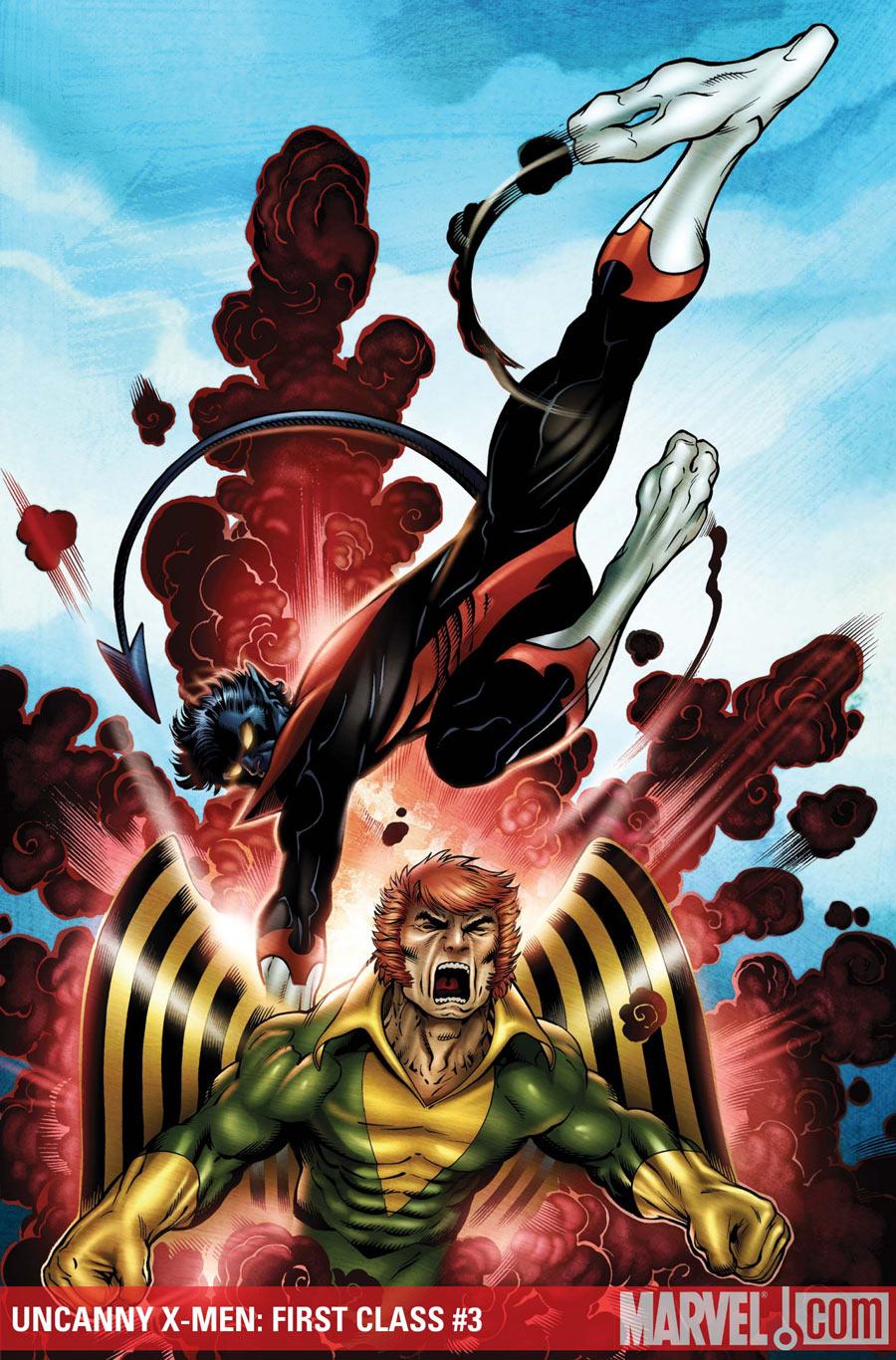
UNCANNY X-MEN #515
Writer: Matt Fraction Artist: Greg Land Publisher: Marvel Comics Reviewer: Optimous Douche
How do you solve a problem like the UNCANNY X-MEN? For the past several years Marvel’s band of merry mutants have been through a hell of a lot of turmoil — genocide, a new base, a new mandate (sort of) and fractioning of the core team not seen since the early 90s. Where DC is prone to generationally hit a complete reset button in tired times, Marvel has always evolved organically, especially when it comes to the X-Men. Well here we are again at the tail end of an organic reboot orgy, saying good-bye to the new home of San Francisco and hello to the forming of a sovereign X-Nation.For others like me that are mere mutie lovers as opposed to full fledged Marvel Zombies, UNCANNY 515 represents a return to “normality” after the abrupt intrusion of Dark Reign and subsequent confusion of the past two issue “Utopia” storyline. I won’t fault the end result, but a little bit of lube to soften the harsh penetration of this DARK AVENGER tie-in would have been nice. One minute the X-Men are in harmony and then WHAM…we are deluged with an epic shit storm seemingly out of nowhere. I’ll be the first to admit that the move to San Francisco was going nowhere fast, but I think it’s also fair to say that the entire move was never given a real chance to succeed. Perhaps a “purpose” was all that was missing, instead of the perceived mantra of “Wow, we’re in San Francisco and here’s a place for mutants to hang out. So, who wants to hang with us?” Maybe a simple reestablishing of the Xavier school could have gotten the X-Men over the hump, but that’s something for a “What If” writer to tackle down the road. For now, we are in a new place and if this issue is any indicator, it will be a welcome homecoming and an all new direction all in one fell swoop.
What happened in this issue was nowhere near as important as what is to come. OK, that’s my nice way of saying this book carries a heavy load of exposition on its waifish 22 page shoulders. With the exception of an explosive intro where a cabal of new mutant bad guys laid waste to a Southwest diner, this issue rests firmly in the talky category. If anything I applaud this choice, because it gives all of the information necessary for returning fans or those that have never traversed an X-Book to join in on the fun. Also, with Land on pencils, zooming in and out between full scene and masterfully crafted character expressions, the book feels as though it’s constantly moving even if it’s focused on one conversation inside one room.
So what happened? Basically some of the best character moments we have seen in the X-Men for a long time. Their mission is clear, forming a new nation aboard the recently resurfaced Asteroid M — how this will happen becomes the real question. Stalwart leader Scott Summers fully admits that for the first time in his life his tactical brain is coming up empty. Emma Frost, now in perpetual diamond form to keep the evil Void trapped inside her, has never shone brighter. Bitchy is no longer a choice; she is now devoid of emotion. Her relationship with the X-Men she’s not sleeping with has always been tenuous at best; it will be truly interesting to see how long her callousness will be tolerated. Hank McCoy has some touching moments as they lay to rest one of the members of his mutant science team, once again exhibiting the lion heart that rests beneath his blue fur. The foundation is laid down for some ideological tête-à-tête’s between Xavier and Summers on how this new nation will be formed (basically think of a pissing contest between Thomas Jefferson and Ben Franklin) and finally the enemy that started off the great mutant wars returns in the final page to no doubt cause some damage next issue.
Yes, this was a great start and a new direction for the X-Men. Yes, Fraction and Land are a team to be reckoned with. But for the love of God, Marvel, please give this new direction some time to take. As much as I enjoyed some of the time in San Francisco, it all feels like a cheap parlor trick in hindsight — a flash in the pan that lasted less than a year. In the end, what was the point? I hate ending on a cliché, but if you’re going to go in a new direction, you need to go boldly. Taking the muties out of hippy-trippy San Fran is a good start; let’s just hope this new direction has time to gain traction before the next “big” event and we find ourselves back at Graymalkin Lane being introduced to the Generation X Next New Mutants.
When Optimous Douche isn’t reading comics and misspelling the names of 80’s icons, he “transforms” into a corporate communications guru. "What if the whole world had superpowers? Find out in the pages of Optimous’ original book AVERAGE JOE. Read the first full issue on Optimous’ New Blog and see original sketches by fellow @$$hole Bottleimp. If you are a publisher or can help these guys get AVERAGE JOE up, up, and on the shelves in any way, drop Optimous a line."
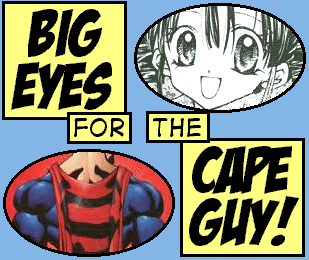

KUROSAGI CORPSE DELIVERY SERVICE Vol. 9
Written by Eiji Otsuka Illustrated by Housui Yamazaki Released by Dark Horse Manga Reviewer: Scott Green
As the title might indicate, the pitch for KUROSAGI CORPSE DELIVERY SERVICE seemed to be that the manga was going to showcase realistically rendered cadavers in a panoply of circumstances. However, around the second volume, it struck me that the manga's writer Eiji Otsuka had something to say. This wasn't simply the product of skimming urban myths and hot button current affairs to construct modern ghost stories. There's a distinctive, liberal arts educated authorial voice to KUROSAGI CORPSE DELIVERY SERVICE. It's interested in esoteric facts. It's interested in history. It's conscious of the implications of those facts and history.After reading more of the manga and more about anthropologist and cultural critic Otsuka, I feel that it's not hyperbole to call KUROSAGI CORPSE DELIVERY SERVICE one of the smartest horror series, regardless of origin.
I'd point to the manga's unreserved curiosity and spendthrift utilization of story concepts to back that claim. My favorite example of this approach occurs in volumes seven, where one particular story draws from celebrity branding, plastic surgery, the mouse that had a human ear grown on its back and the lore of jinmenso (a supernatural tumor with a human face) for an episode twisted with multiple revenge plots.
Driven by real intellect and informed opinion, Volume Nine of KUROSAGI CORPSE DELIVERY SERVICE finds Otsuka fitting an examination of the social ecology around otaku and the legacy of World War II into horror stories. This genre has long addressed prickly issues metaphorically, but watching Otsuka fit his theses into the structure of horror is almost poetic.
The Japanese serialization of KUROSAGI CORPSE DELIVERY SERVICE has changed publications three times as the periodicals have shuttered, repackaged or relaunched. Given Volume Eight's attention to establishing (or reestablishing as the case might be) the fundamental premise of the series and the identity of its characters, I strongly suspect that the volume caught KUROSAGI CORPSE DELIVERY SERVICE sticking one of those dismounts. It managed some effecting moments in some familiar horror scenarios, but what it appeared to be doing seemed more out of necessity than inspiration.
Volume Nine is back on firmer ground, and back with its unique MO of synthesizing diverse bits of history, politics, sociology and esoteric facts horror ghost stories.
Because KUROSAGI CORPSE DELIVERY SERVICE is one of my favorite manga, it pains me to admit that I forgot that I had read Volume Nine. I went through it, shelved it for a while, and when I picked it up to read ahead of this review, I was disappointed to note that rather than new material, it was something that I'd already read. The issue is not that KUROSAGI CORPSE DELIVERY SERVICE's stories are forgettable. It's that they are constructed with the aim of exploring diverse subjects through the horror anthology format rather than driving an ongoing narrative.
Its character are a crew of over-educated, under employed Buddhist college grads whose lack of job prospects and un-marketable skill sets led them to the unprofitable business of delivering dead bodies to where they need to be. The characters do matter. They are well constructed and their backgrounds do have a bearing on the course of the manga. This volume in particular reveals significant background information about Keiko Makino - the loligoth embalmer and Yuji Yata - who claims he channels an alien intelligence through the sock puppet worn on his left hand. While there is a meta-mystery relating to the characters, along the lines of the X-Files mythology, it has thus far been more background than a driving force of momentum.
Manga writer Otsuka is fifty one years old, which makes him slightly younger than the creators who were close to Japan's student protest movements at their height, like Mamoru Oshii or Katsuhiro Otomo. His background includes academic study in anthropology, women's folklore, human sacrifice and post-war manga. When it comes to the academic discussion of die-hard fan otaku, Otsuka is on a tier with Gainax co-founder turned intellectual (and diet book author) Toshio Okada and celebrated pop artistic/Superflat founder Takashi Murakami.
Unlike manga that exists in a vacuum or trades in concepts divorced from reality, Otsuka grounds his work in thoroughly considered extrapolation of true issues. Unlike Murakami, whose work speaks about rather than to otaku, and rather than Okada, who has distanced himself from anime creation and creators, Otsuka has remained in the trenches.
Looking at otaku and World War II, the subject matter of volume nine is clearly in Otsuka's wheelhouse. He isn't trailblazing in his approach to the subject matter either, with stories involving or driven by stock characters such as an egocentric starlet, corrupt politician or duplicitous research partner.
The first of the volume's stories exemplifies the manga's use of conventional moving pieces, such as the above mentioned starlet/idol is harassed by creepy, persistently reappearing doll. Otsuka's interest in mechanics and obscure curiosities can be seen in the detailed procedure used to create possessed dolls and the recreation of a shrine for unwanted toys. Otsuka puts on his culture critic hat and breaks out the otaku-ologists scalpels as he deconstructs the geek/object of geek affection dynamic. As editor Carl Horn says in his legendary end notes "Eiji Otsuka's feelings about otaku are, shall we say, nuanced." Rather than comfortably simple recriminations, Otsuka delves the convoluted feedback channels between extroverted, fame seeking idols and introverted, obsessed fanatics.
The next story, “The Grape Colored Experience” plays to Otsuka's own geek interests. Like the grand ear mouse/tumor/branding episode, this one is a titan of alloyed ideas... a headless horseman, the Susumu Tachi optical camouflage cloak, voyeurism, Mamoru Oshii (a great doppelganger appearance) and associated pop culture representations. There's a great Tarantino-esque thread around an argument as to whether the invisibility camo was inspired by GHOST IN THE SHELL or OH! INVISIBLE MAN (OH! TOUMEININGEN), suggesting Otsuka's own fascination with the subjects.
After a slightly below par Volume Eight, Volume Nine is back to the hyper-informed horror synthesis of ideas that has made KUROSAGI CORPSE DELIVERY SERVICE a favorite. What originally seemed to rely on gross out spectacles has continually proven to be a remarkably smart take on spooky standards.
Scott Green has been writing for AICN ANIME for over eight years. If you like what you see here and love anime & manga, be sure to check out his latest AICN ANIME column every week on AICN.

KING OF PAIN #1
Writer: Nicholas James West Pencils: Jiro Tamase Inks: Sam Rodriguez Reviewer: Matt Adler
This online comic is a curious blend of Kurt Busiek’s ASTRO CITY and Garth Ennis’ THE BOYS. On the one hand, it has the fairly cynical depiction of superheroes that we see in THE BOYS, where the superheroes are self-centered, arrogant, abusive pricks, but on the other hand, there is a bit of underlying affection for the “supers” (as they’re called here) in terms of the world that’s built for them, a city called “New Ephesus” which harkens back to ASTRO CITY.It isn’t immediately clear what or who the story will focus on at the beginning; initially, we are being told a story from a super’s perspective, but gradually the narrative works in the plight of a “norm” named Kyle Kapowski (is he related to Kelly Kapowski?), who grows up aspiring to be a super, but finds that without powers, he’s a second class citizen in this society. The super takes his girlfriend, beats him up, and gets him arrested, all with seeming impunity; in New Ephesus, supers are highly respected, a cross between celebrities and freelance law-enforcement agents, with all the privileges that implies. It’s just expected that the word of a super will be taken over the word of a norm in all things.
For a single issue, the story raises a number of interesting topics, including issues of discrimination, police brutality, the role of power and privilege in society, and how society would be affected if being “special” was, in fact, the norm. It’s a surprisingly deep and engaging effort for a new writer. My criticism of the issue mainly lies in the fact that so much thought and focus is put into establishing the world here, that we really don’t get that the main character is in fact the main character until the closing scenes when Kyle learns a startling secret about himself. The issue also needs some copy editing (the line “I was a cantankerous in my self pity” comes to mind), but the gaffes aren’t too frequent.
The pencil art by Jiro Tamase is highly stylized, leaning towards the manga side of the spectrum, but it tells the story effectively. It does have a bit of a rough, unfinished look; not all of the figures are fully inked. The creators plan to submit it to publishers soon, and it will need some touch-ups before then, but overall, this looks like a comic that is ready to move into print.
NICKY AND ZANE #1
Writer: Nicholas James West Artist: Sam Rodriguez Reviewer: Matt Adler
This effort from writer Nicholas West and Sam Rodriguez (this time providing both pencils and inks) is a fairly straight-up riff on the 1990s cartoon “Pinky & The Brain”, which featured “laboratory mice [whose] genes have been spliced” who strive to take over the world. This time, it’s a darker twist, with a rather creepy and disturbing art style to match. Zane (the “Brain” character) has stitches all across his cranium where he’s presumably been operated on, and a distended stomach which apparently makes him incapable of carrying his own weight. Nicky is not quite as completely useless as Pinky was; he’s certainly not much smarter, but spends his time lifting weights, and so serves as Zane’s muscle.Like KING OF PAIN, this story is also set in New Ephesus, and in an effort at world-building the creators have to be congratulated on, it’s tied into the superhero premise by suggesting that the experiments that created NICK AND ZANE were aimed at developing government-sponsored superheroes.
The story itself is a bizarre mix of gory and funny; it’s not kid-friendly by any means, as Nicky and Zane employ extremely violent methods in their attempts at world domination. But there are a number of laugh out loud moments; my personal favorite came when Zane, describing the computer virus he has designed, exclaims “Not even Linux is safe from me!”
This is a fun comic, although I’m not sure of its viability outside of a pet project that the creators do for themselves on the web; it is after all based on a cartoon that is already more than 10 years old (as entertaining as it was), so it will always be something of an inside joke. But taking it for what it is, it’s an entertaining read.

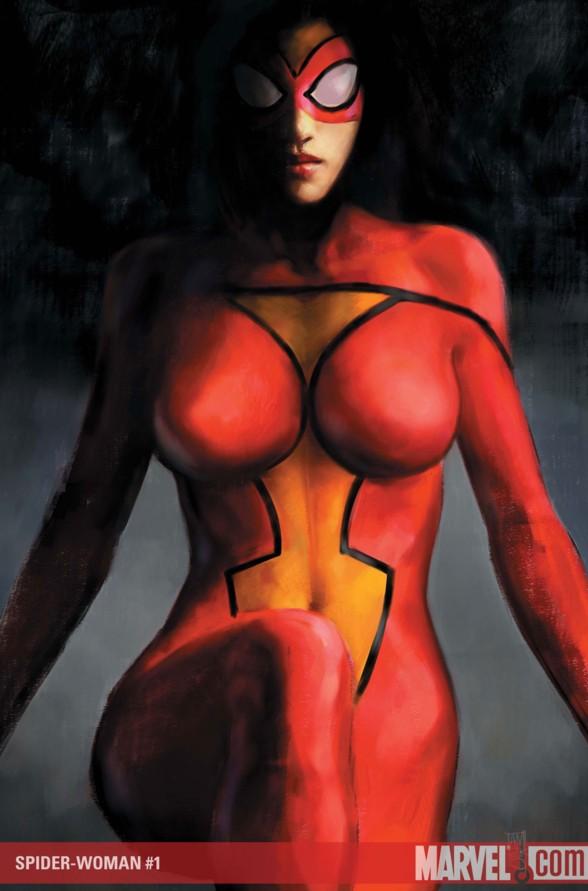
SPIDER-WOMAN #1 Marvel Comics
It’s a comic book by the former creative team of Bendis and Maleev. Depending on which side of the line you stand, this is either going to be exciting or hum drum news. All of the aspects that made Bendis/Maleev’s DAREDEVIL Bendis/Maleev’s DAREDEVIL are ever-present. We’ve got moping super heroes, photo-rendered images of models who look like they’re waiting for the artist to snap their picture a bit too long, and of course, a smidge of action to appease the splosion folks. Guess you know what side of the line I’m on. Being a fan of the original SPIDER-WOMAN series, I can’t say I was excited about reading this new incarnation of the character. A double page recap in the middle of this book pretty much sums up what I figured I’m gong to get from this series with most of the panels dedicated to the story Bendis told in NEW AVENGERS/SECRET INVASION/SPIDER-WOMAN miniseries and one caption focusing on the aforementioned 50 issue run in the late-seventies. Once again, if it wasn’t written by Bendis, it ain’t important to Bendis. Fans of NEW AVENGERS will rejoice. Anyone who grew nostalgic a while back when it was mentioned Spider-Woman was being brought back for Avengers membership will be wondering who this new chick is in the Spider-Woman costume. Still, the S.W.O.R.D. plot may be interesting (although if it is a defense organization against extra-terrestrials, wouldn’t the name S.H.I.E.L.D. be more fitting?), so some of the spy stuff might be fun. But I still miss the Spider-Woman who was more focused on quirk, mystery, & the supernatural. - Ambush Bug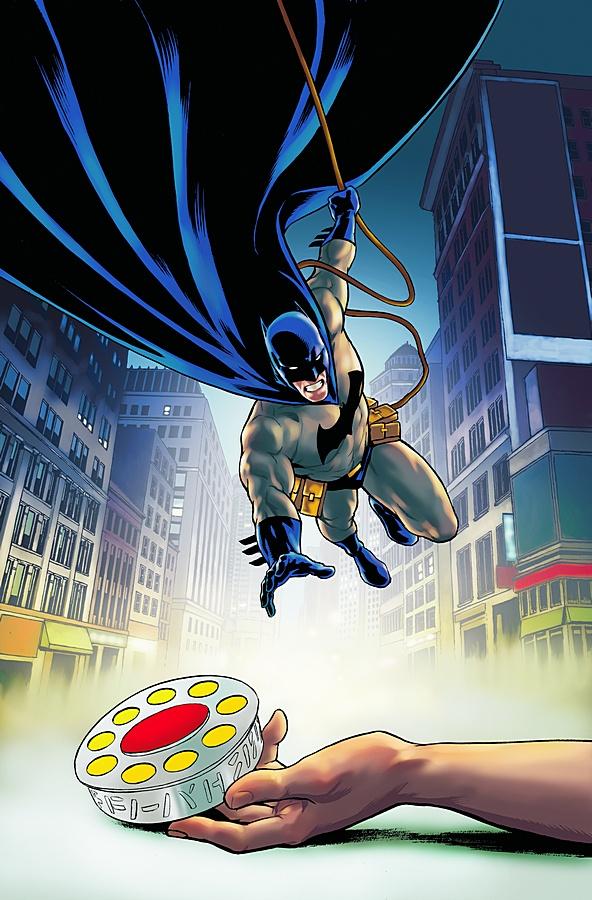
THE BRAVE AND THE BOLD #27 DC Comics
Acknowledging that JMS couldn’t finish a series if his life depended on it, DC smartly gave him a book where he can do one shots on a regular basis. Though every time I see those three letters in that particular order I can’t help but shout “JUST FINISH THE FUCKING TWELVE!”, I must admit, this was a pretty ok story once I got past all that. Not a lot of flair going on here though. Jesus Sais’ art is fantastic, but there’s something melancholy and serene about the way he draws his laid back looking characters. It’s almost as if they’re all high. Sais does do a fantastic job of differentiating a group of people from one another, giving even background characters their own posture, attitude, and personality. Being a fan of the most recent DIAL H FOR HERO series from a few years back, I definitely found the more serious tone of this story to be refreshing pairing Batman with the holder of the dial, Robby Reed. Batman comes off as preachy in the end, which was annoying. But that’s Batman, I guess (though JMS—aaarrrrrghhh Just finish the fucking TWELVE!—never lets us know if it’s Dick or Bruce under the cowl). Although it wasn’t the most triumphant debut issue for JMS—grrrr TWELVE grrrr—it does show that strong storytelling and art are ahead for this title. Hopefully, we can expect this book to delve into some of the less traveled areas of the DCU and feature some of the more obscure characters. All I know is that if DC knows what’s good for them, they won’t schedule a multi-part story line for JMS—gnaaaarrrrrfghhh FINISH THE TWELVE… - Ambush Bug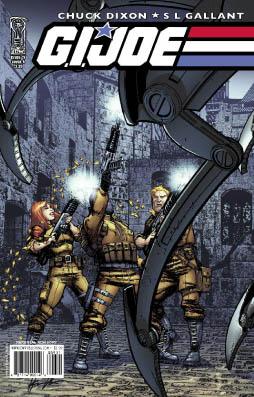
G.I.JOE #9 IDW Publishing
Though GI JOE: COBRA was by far the best of IDW’s Joe relaunches, this series spearheaded by actioneer Chuck Dixon is a close second. I like the way this issue ties into last month’s GI JOE ORIGINS issue featuring Mainframe. The unlikely pairing of the computer geek and Snake-Eyes is surprisingly fresh. This is where Dixon shines, in pairing unconventional heroes together and watching them bounce off one another as they try to save the day. COBRA may not have reared its scaled head yet in this book, but that doesn’t mean that the action and intrigue isn’t top notch. It’s also good to see characters like Downtown and Cover Girl get a little face time. With such a deep stable of characters in the GI JOE roster, it’s fun to see stories focusing on someone other than Duke, Scarlett, and Snake-Eyes. - Ambush Bug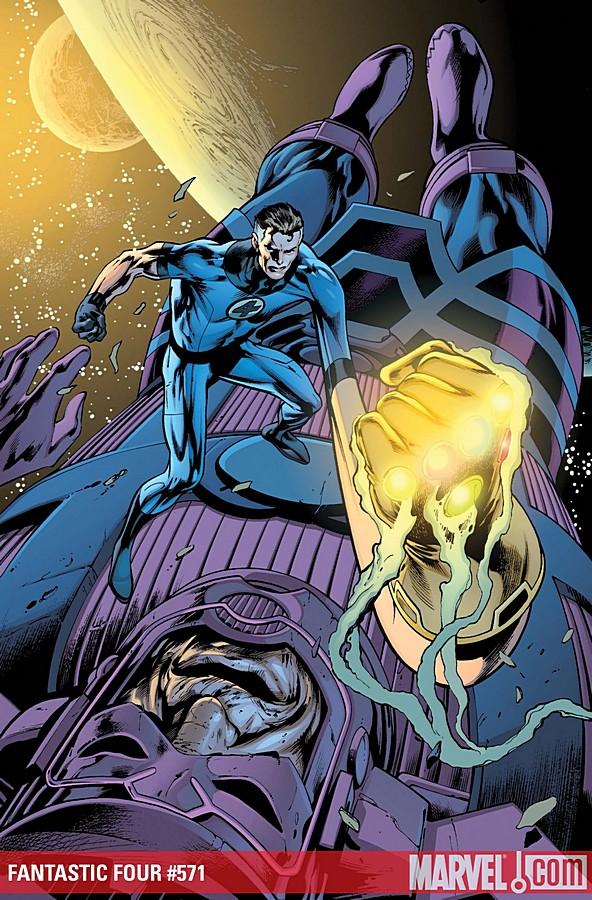
FANTASTIC FOUR #571 Marvel Comics
It’s Jonathan Hickman and Dale Eaglesham’s second issue into this new FF arc and I’m hooked. Usually, I hate alternate world stories, but there’s something about the patient and confident style with which Hickman delivers the story in this issue that has me completely intrigued. Hickman covers all the bases without making it seem like he’s going down a checklist of what a FF story has to be. Yes, there are obligatory scenes with Johnny and Ben and the kids. Yes, there’s an appearance by Doom. Yes, there’s conflict between Reed and Sue. But they’re done so with an eye for both sensitivity and wonder. Reed is written smartly in this book, not as if the writer is just quoting verbatim from a science magazine, but smart as in, he’s written intelligently and dare I say it, human. Hickman not only understands the dynamics of the characters, but unlike Millar before him, he has a sensitivity to and an understanding of how important the concept of family is to the title. Plus seeing all of the wondrous and nightmarish things a conglomerate of Reeds can come up with is simply thrilling. Sure, we’re only two issues in, but I don’t know when I was as excited to read an FF book as I am right now. - Ambush Bug

